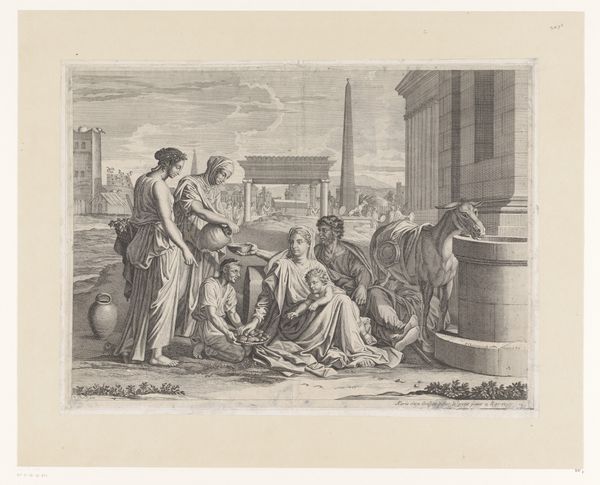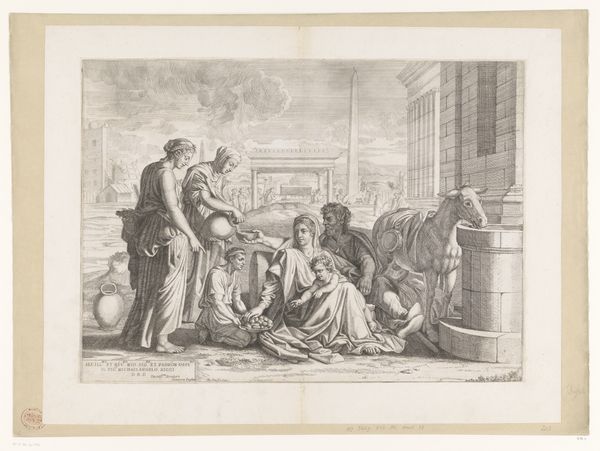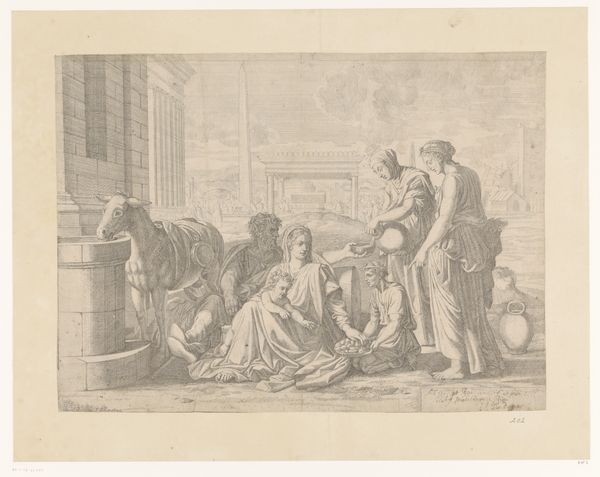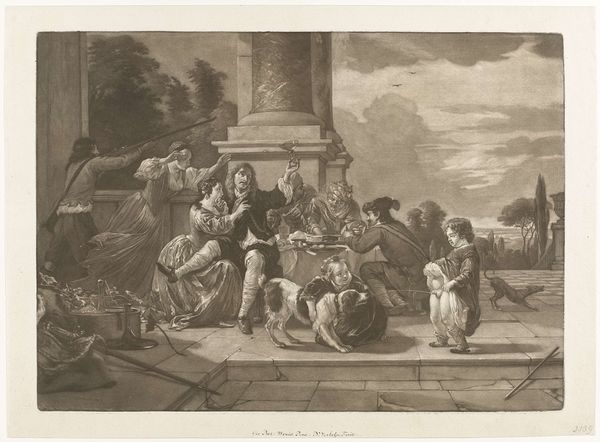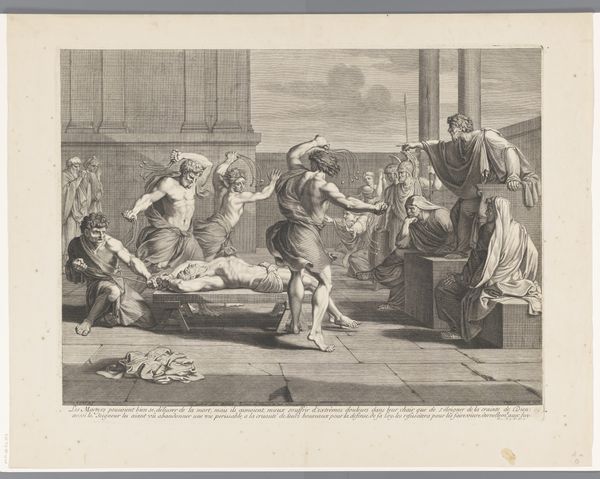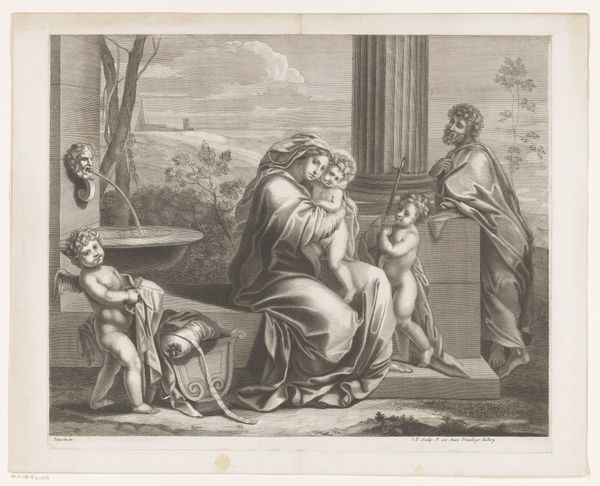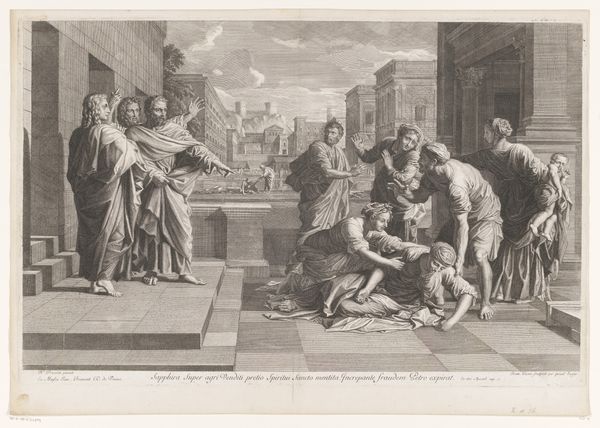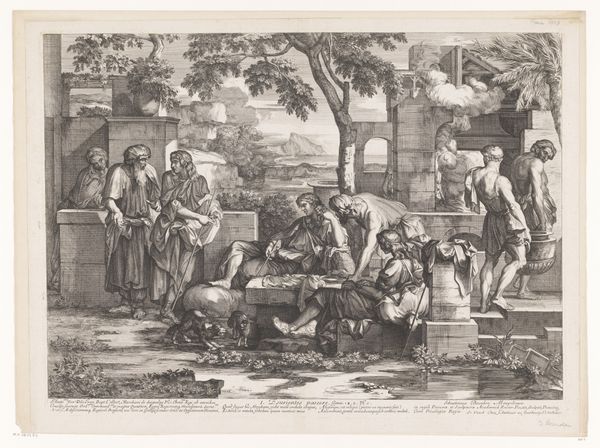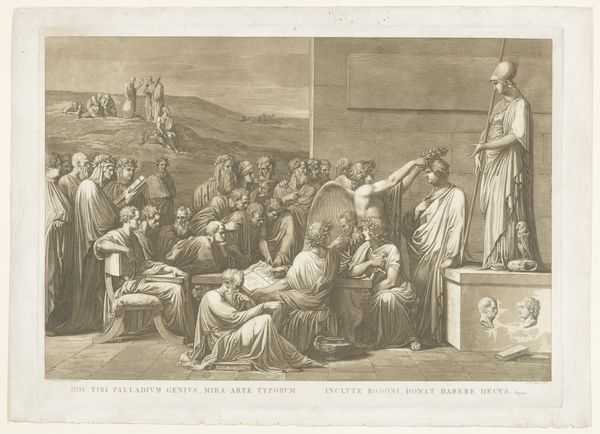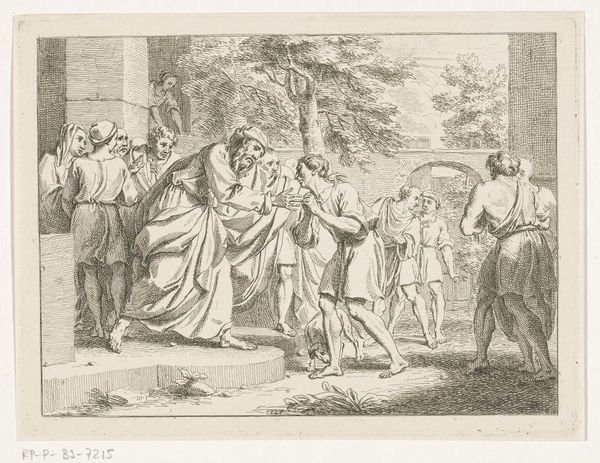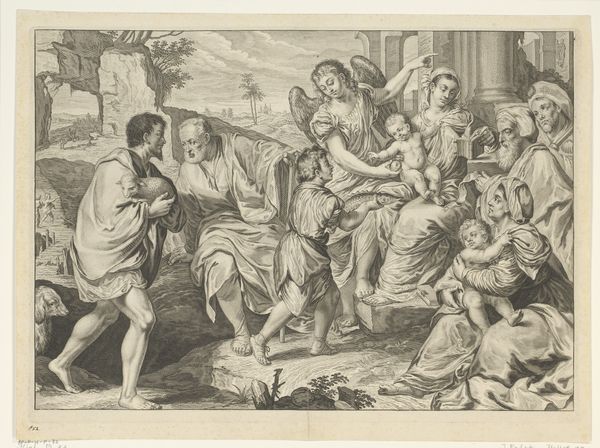
engraving
#
baroque
#
figuration
#
genre-painting
#
history-painting
#
engraving
Dimensions: height 353 mm, width 456 mm
Copyright: Rijks Museum: Open Domain
Curator: Gazing upon "The Holy Family in Egypt," etched sometime between 1656 and 1706, the scene feels like a whisper of antiquity captured in monochrome. What do you feel emanating from it? Editor: Intrigue, mainly, but also a palpable stillness. I'm immediately struck by the composition. It seems meticulously crafted. You have this foreground with the Holy Family contrasted with the implied labor evident with the people bustling in the distant Egyptian architecture, this work really captures an expansive, epic sweep. Curator: It is by Étienne Gantrel, after all. He seemed to infuse a unique dramatic storytelling to familiar biblical narratives. Do you perceive this drama here, with Mary, Joseph, and Jesus taking refuge? I find a serenity in it, a hopeful pause in a desperate journey. Editor: Gantrel did such exquisite, finely wrought labor, using the etching medium. I can practically feel the ink embedded in the paper; consider how his skilled hands could bring such delicate precision from such potentially crude materials like the etching needle and acid. He has certainly captured a historical interpretation here in an innovative display. The artist creates an engaging space with just those gradations of monochrome ink! I can't even imagine how someone dreams up so much complexity. Curator: Complex, yes! Observe how the landscape and architecture itself seems to mirror and embrace the human forms, wrapping the figures within history itself. Notice how both ancient Roman, Hebrew, and Egyptian culture can somehow simultaneously and symbolically exist together. Perhaps the goal isn't so much accuracy, but, instead, a deep meditation on universality and escape. Editor: It almost feels like a pre-industrial advertisement promoting religious life to upper-class aristocrats! Engravings such as these became quite widespread because it became reproducible, right? Though it has an accessible look, prints and engravings like these allowed even illiterate and working class Europeans the option of participating with the church! Who needed illuminated manuscripts at that point? Curator: Exactly! Mass production techniques democratizing artistic and religious access! I appreciate you grounding us back to earth, truly. Thank you, and perhaps some viewers can think further about how the mundane material components contribute so meaningfully to the divine, and universal spiritual yearnings of human existence. Editor: The social and art historical importance and impact of this type of artistic work is not something to forget! Thank you, and perhaps more viewers will get to be inspired to consider the relationship between art, commerce and belief!
Comments
No comments
Be the first to comment and join the conversation on the ultimate creative platform.
